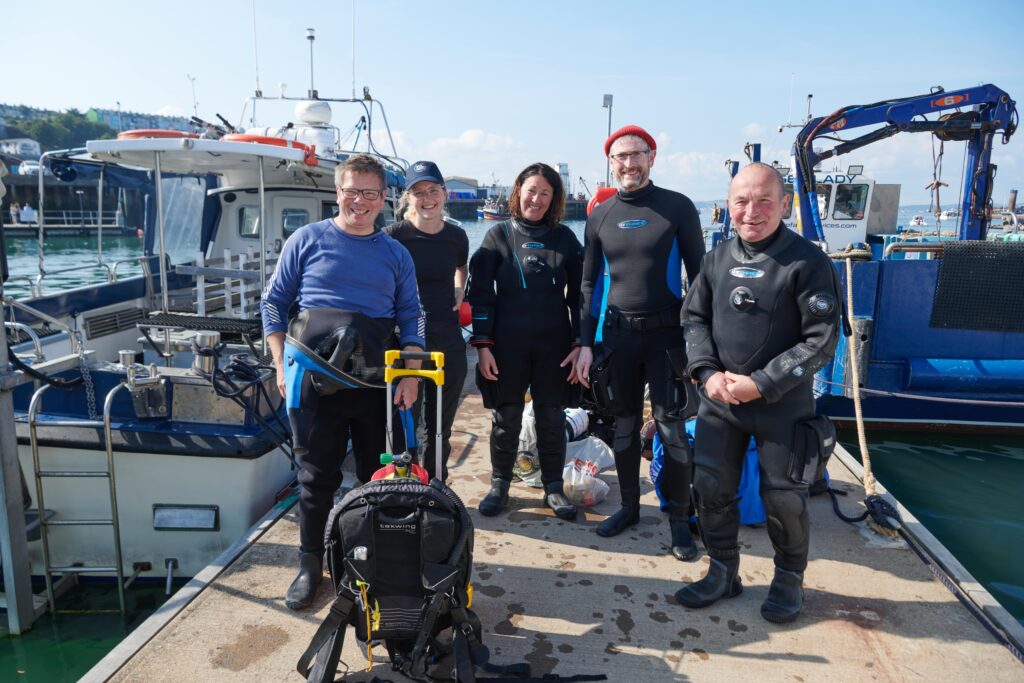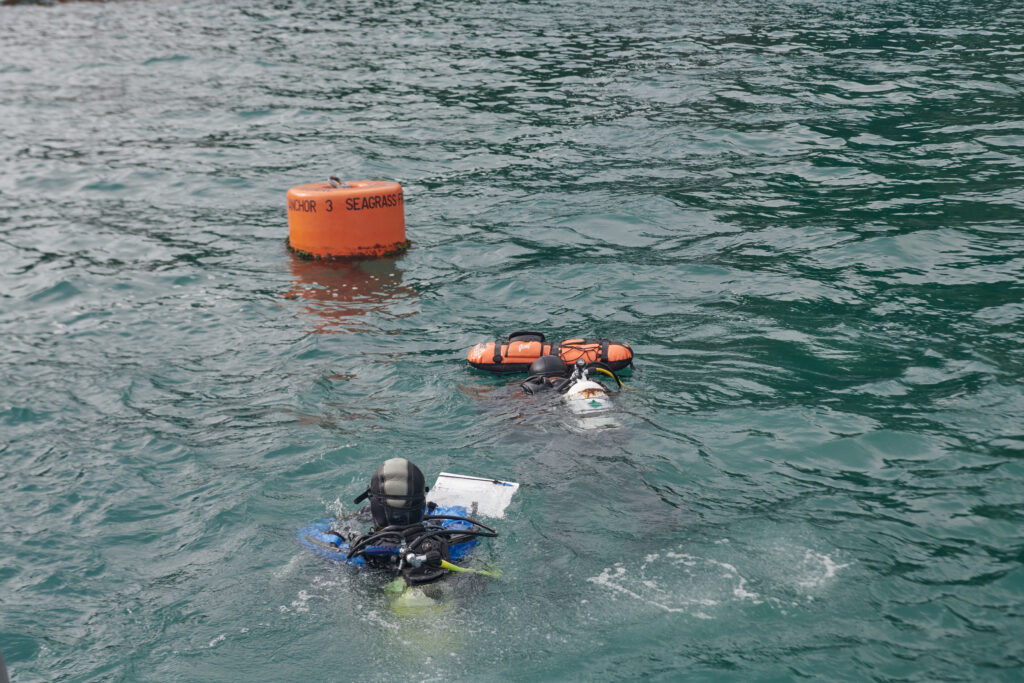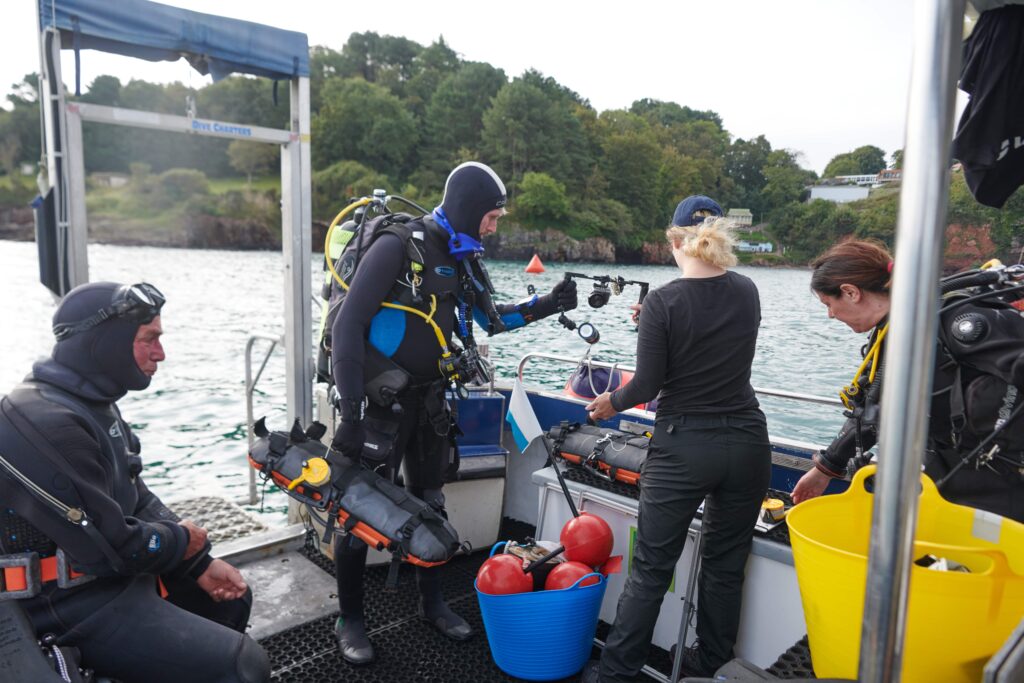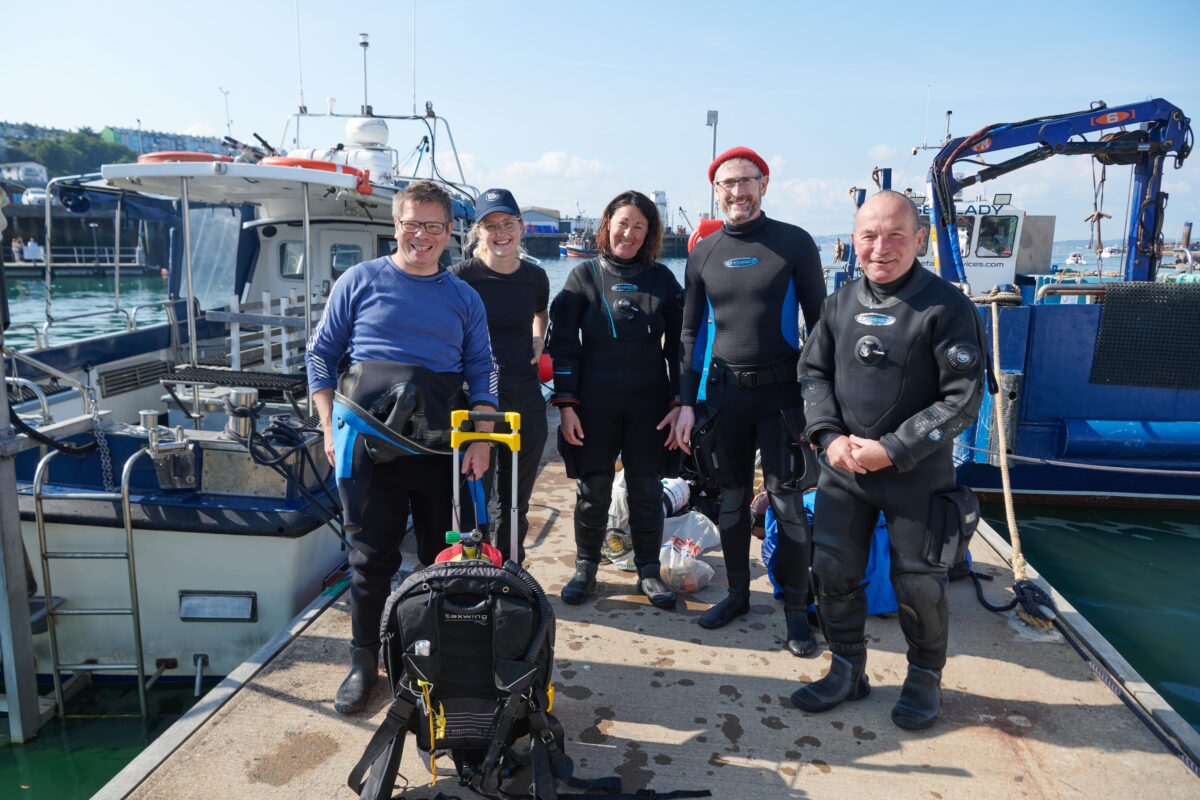
I recently had the opportunity to witness first hand a team from the Wild Planet Trust working to survey seagrass meadows in the Torbay area. The ‘Save Our Seagrass’ project, which has been going for some years, involves repeated survey work throughout the year to assess the meadows’ health and the diversity of marine life that they support. Having lost over 90% of seagrass meadows around the UK in recent centuries, these surveys provide vital information about the growth or decline of existing meadows, as well as potential impacts from factors such as global warming.
Megan and her team of volunteer divers met with me early on a Saturday morning to travel out into the bay to survey three specific meadows: Fishcombe Cove, Torre Abbey and Breakwater Beach. Each of these meadows carry unique characteristics derived from their locations. Torre Abbey is situated close to the harbour entrance of Torquay and is very shallow during low tides. The Breakwater Beach area is home to local swimmers and tourists.

The third site, Fishcombe Cove, near the fishing town of Brixham, holds a key to solving one of the problems that has contributed to the deterioration of the meadows. There are typically many reasons why a meadow sustains damage and/or gets wiped out, the most obvious being where fishing nets are trawled across the seabed. But more and more these days, casual leisure boat users cause damage by dropping their anchors. When damage occurs, it can take ten years or more to recover, assuming that the conditions are favourable.
An innovative approach to solving this problem has been using the deployment of “no anchor” buoys such as those that are situated in Fishcombe Cove. Designed to allow up to three boats to moor without dropping anchor, these buoys are chained to the seabed and have smaller submerged buoys attached to them which keep the chain from scraping the seabed and damaging the seagrass.
The surveys such as the one I observed use two different methods: a transect and a spiral form, and each dive team is equipped with a float with a GPS unit that stays on the surface and records their location as they move through and around the seagrass meadows. Each diver carries two hours’ worth of oxygen to be able to carry out the surveys at anywhere up to ten meters depth. With underwater cameras they record the general health of the area and any unusual sightings along with expected marine life.

One of the observations from the divers from the surveys that I attended was the extent of life that had grown on the chains for the buoys, along with shoals of Bib (Trisopterus luscus) that were using the seagrass for cover. Around the meadow near Torre Abbey, plenty of additional life was found including Pipefish (Nerophis ophidion), Common Cuttlefish eggs (Sepia officinalis), Hermit Crabs (Pagurus bernhardus), gobies, periwinkles and Sea Slaters (Ligia oceanica).
All the data from the dives will be collated and, following a single additional dive day schedule in October, the team at the Wild Planet Trust will start the process of analysing the collected date from this year, looking at how the meadows have changed in comparison to previous years.
Learn more about the Wild Planet Trust’s ‘Save Our Seagrass’ project on the Wild Planet Trust website, where you can also find out more about their other work and ways to support them.

